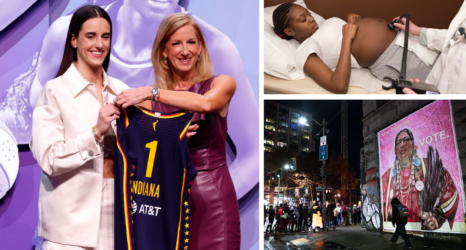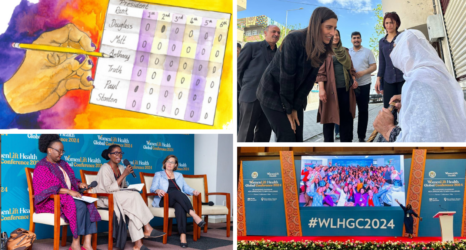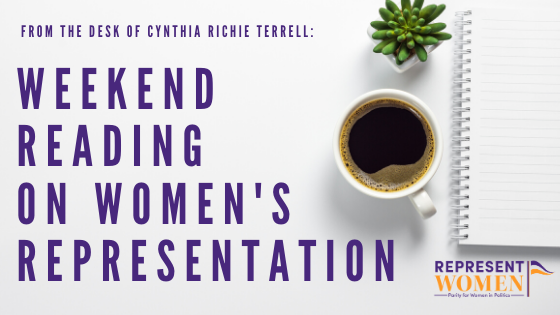
Weekend Reading on Women’s Representation is a compilation of stories about women’s representation in politics, on boards, in sports and entertainment, in judicial offices and in the private sector in the U.S. and around the world—with a little gardening and goodwill mixed in for refreshment!
While we don’t yet know the short-term consequences of Wednesday’s rampage on the Capitol, we do know a few things: Women Senate staffers had the presence of mind to grab the mahogany boxes containing certified presidential results from the states and carry them to safety, the police and others assigned to protect our elected representatives and our democratic process failed to do so, and the polarization caused by our winner-take-all politics is dangerous.
Individuals must be held accountable for their actions, but we must also redesign the institutions that drive the animus that has become commonplace and reached an apex on Wednesday.
Individuals elected in single member districts with plurality winner rules have very few incentive to work with fellow lawmakers to reach policy outcomes that benefit the majority of voters. And the winner-take-all rules in these single winner districts make nearly all Congressional districts safe for one party and for the incumbents who hold those seats. Events from this week are a stunning reminder that we must build institutions that represent the people they serve.
There has been a lot written about the Fair Representation Act and the other structural solutions that are part of RepresentWomen’s policy agenda but this editorial from The New York Times lays out the argument well. People from across the partisan spectrum are calling for change—albeit with different tactics. We must answer those calls with collaborative work to build a truly representative democracy:
This is the main reason to favor multimember districts: They can help all political groups, especially those in the minority, get represented in rough proportion to their share of the vote. Right now, for example, Republicans enjoy a significant “seat bonus” in Congress, meaning they win more seats than would be expected based on their share of the national vote. But throughout much of the 20th century, the situation was reversed, and Democrats often had an even bigger bonus. The reasons for these bonuses vary, but the point is that the American political landscape is always shifting, and it’s better for everyone if the ground rules for representing our political differences are as fair and unbiased as they can be.
Multimember districts offer other important benefits, too. When three or five members of Congress all represent the same district, it’s much harder for politicians to gerrymander themselves and their party into permanent power. And experience from the states shows that more women and minorities get elected in multimember districts.
How easily could all of this be done? For starters, Congress would have to reverse a 1967 law prohibiting multimember districts. That law was passed at a time when there was concern that southern whites were taking advantage of multimember districts to dilute the electoral power of African-Americans, who had just secured the right to vote. But that problem goes away with the ranked-choice voting system described above. Congress could implement all these reforms, too — as in the Fair Representation Act, which was introduced in the House last year.
The result of all this is that the vast majority of voters, whether they live in cities, in suburbs or in rural areas, would have someone in power who represents them. This could help foster bipartisanship and compromise, as members of different parties would need to work together on behalf of their district’s voters. After all, both Democrats and Republicans need the potholes to be fixed.
Add in a larger House of Representatives, and you increase the opportunities for voters to be represented more in line with their numbers in society.
And that’s the whole point. When citizens feel that their voice is being heard by government, they’ll be more eager to participate, more likely to vote and more politically engaged over all. That’s what a democracy should look like — and in the long run, it’s the only way a democracy can survive.

I stumbled across a fascinating interview with professor Sarah Childs and
Karen Celis on the Women Lead blog—which I suggest everyone sign up for—that reflects deep thinking about representation that encourages readers to look beyond the simple tallies of how many women are running or elected to bigger questions about diversity of thought and power:
Q: Your book is called “Feminist Democratic Representation.” What does this really mean? How is it different from women’s representation in politics?
Sarah Childs: We are addressing a bigger question than how many women are sitting in our parliament. Not because we don’t think that’s an absolutely critical question; we do. But the poverty of women’s representation goes beyond an imbalance in numbers.
Feminist democratic representation is about trying to ensure that the diversity of women’s experiences, views and perspectives are included in our political discussions, institutions, and decisions. We’re interested in to what extent are our politicians currently responsive to the diversity of women’s interests? Because when we look at politics, what we see is political debate that too often does not include those diverse women’s experiences, aspirations, interests, needs.
Sometimes political parties will address women’s issues. We know that and we could argue that it has increased over time. But actually, for what reasons? Are they doing that for party strategic reasons? Are they doing it for electoral gain? Often parties will prioritize issues that work for them but women might well prefer another issue to be really prioritized.
We’re interested in rebalancing political agendas to stop them from being skewed against women.
We feel very strongly that our political institutions, as they’re currently structured, too often fail to take women’s voices into concern because these are historical institutions that have for so long mostly reflected the interests of men, that women can be a constituency to be ignored or to be included, but on their terms, and not on women’s terms.
And of course, one of the other aspects that is so important. When we talk of “women’s issues”, we must keep in mind that women don’t always share the same interest There could well be a competition or diverse interests. And rather than seeing that as undermining the case for women’s representation in politics, we think that a feminist democratic representative process needs to be fully designed to take those differences into account.
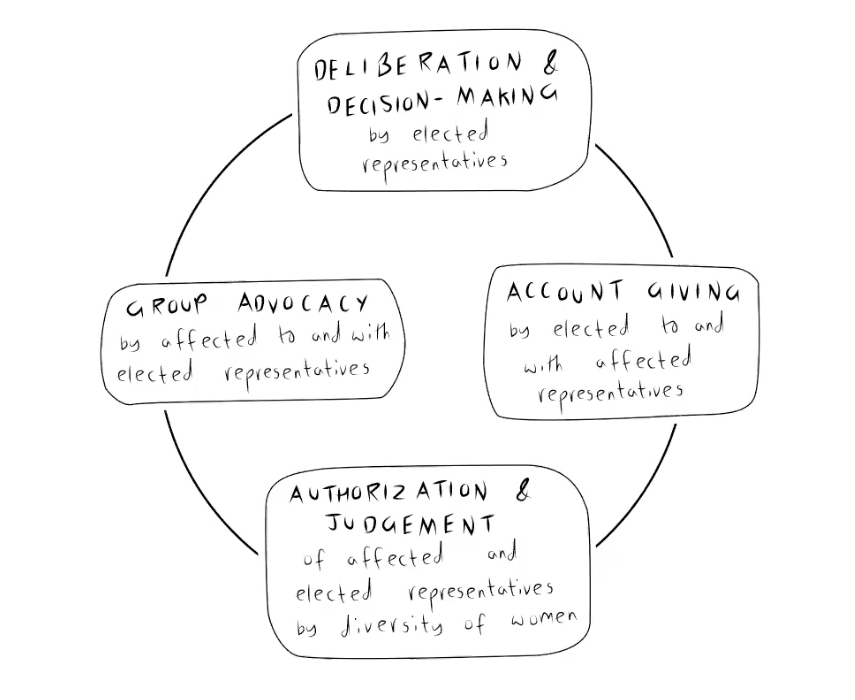
Q: So, would it be fair to say that in your model, getting more women into our political institutions is necessary, but it’s not sufficient?
Sarah Childs: Absolutely. Not sufficient, but absolutely necessary. Often, the question of representation gets reduced to a rather simplistic understanding of what counts. But it’s that sense of counting the numbers of women that tick them off. And there we go, everything’s okay. One of the concerns we have is that political parties/leaders can sometimes be very content to say, “We have 30%-33% women, and that’s the UN sort of number and we’re doing okay”.
We’d argue that political equality demands parity of representation. And because of intersectionality and ideological difference, it’s not just getting more women in, but also recognizing that there will be and there are multiple identities.
Addressing the poverty of representation is about more than just presence. It’s about how well you are responded to—to the extent that you can hold politicians, parliaments, parties to account.
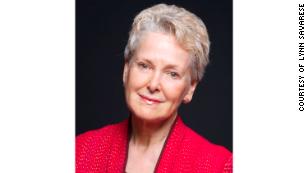
Former ambassador and women’s equality leader Swanee Hunt had an interesting piece on CNN about the role that newly-elected Republican women may play in the 117th Congress:
On January 3, when members of the 117th Congress raise their hands and swear their oaths, a significant shift will take place. The number of Republican women in the House will more than double from 13 to at least 28 (two races are pending litigation). For a party historically known as “pale, male and stale,” this increase is particularly meaningful.
The number of women on the other side of the aisle — currently 88 — has been growing for decades. The first milestone came in 1985, when there were only 12 Democratic women in the House. That year, the pro-choice mega-fundraiser EMILY’s List (“Early Money Is Like Yeast — it makes the dough rise”) was born, and the Democratic Party began a slow but steady transformation.
The recent influx of Democratic women into politics was spurred dramatically four years ago by a flagrant misogynist’s defeat of one of the most competent presidential candidates in our history. The subsequent Women’s March further fueled the surge. EMILY’s List was deluged with women streaming through the cracks in the glass ceiling.
In 2018, many of those candidates won red districts, flipping the House and handing their party a 36-seat advantage.
Almost 40% of the House Democrats were female. The gutsy candidates largely supported each other, but further advancing them were party leadership, funders and a legion of like-minded groups. The surge in the Democratic victories of well-funded female candidates was a wake-up call for Republicans that they had to “diversify or die.” What Dems did in that election cycle became a playbook for the GOP. Existing Republican political action groups, like Value in Electing Women (VIEW) and Winning for Women gained traction as never before.
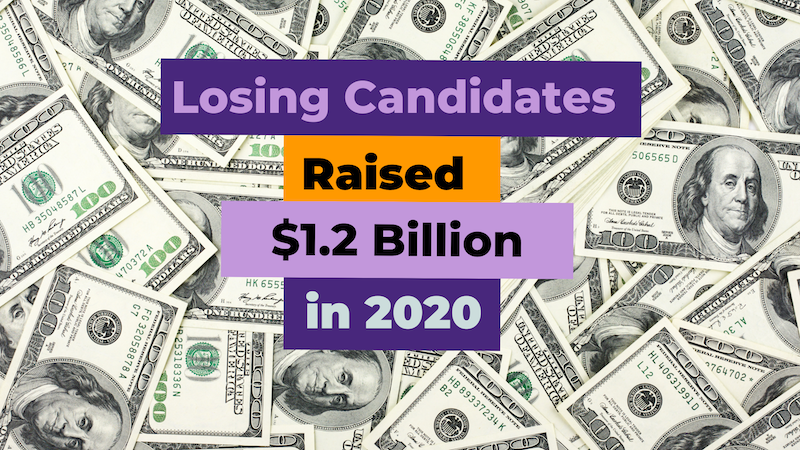
Finally, RepresentWomen’s newly-minted coordinator of advocacy and communications, Maura Reilly, has been researching the amount of money raised and spent on individual women candidates—on “training” programs and on campaigns.
She argues in this piece that it would be a smart tactic to also invest in systems strategies that ensure that more women win when they run because current strategies alone—despite enormous investment—are not sufficient:
This past Sunday, after being re-elected as Speaker of the House, Nancy Pelosi addressed the 117th Congress saying “It gives me great pride to serve as Speaker of the most diverse House in the history of our country – with a record-shattering 122 women.”
From day one, the 117th Congress has already made history with record numbers of women, women of color, and Republican women serving.
118 women will serve as voting representatives in the House plus four additional non-voting delegates; 52 are women of color.
25 women were sworn into the Senate, four are women of color. However, these numbers will go down when Kamala Harris vacates her seat to become Vice President.
37 Republican women make up the 117th Congress, breaking their previous 2010 record of 21.
Our record-numbers not only failed to significantly move the needle toward gender balance, it also came with a hefty price tag. Combined, the 124 women who won their general election bids raised a total of $484.6 million; while, the 215 women who lost in the general election raised a combined $618.1 million. Even with a record number of women donating and raising money, many of the highest funded women candidates still lost their 2020 races.
Although a record number of women ran in 2020, they ran in largely uncompetitive races, because they were running as challengers. In 2020, 189 women ran as challengers, only nine won their races, a success rate of 4.8 percent. Despite their low chances of success, women challengers raised a combined total of $423.8 million. In Kentucky, challenger Amy McGrath was the highest funded congressional candidate, raising a total of $88.1 million compared to incumbent Senator Mitch McConnell’s $68 million. Despite her unmatched funding, McGrath’s loss was all but predetermined because incumbents have such an advantage in our system.
Even with growing revenue for organizations which train women to run for elected office, and growing numbers of women running for office, our progress remains slow and intermittent. Between 2001 and 2019 organizations which train women to run for office had a combined revenue of $120.6 million (across 31 organizations with available financial information); but the percent of women in the House has only gone from 13.6% in 2001 to 27.1% in 2021. This slow improvement is not due to organizations failing to prepare women to run, or preparing too few women; but, because the system women are being trained for offers very few competitive races for women to run in and actually win.
Until we address the problems with our electoral system and implement institutional strategies to correct it, women will continue to be severely underrepresented at every level of elected office, including Congress, regardless of the growing price tag which comes with every election cycle.
A portion of the money spent on support for individual candidates (many of whom lose) could be spent on implementing systems strategies like ranked choice voting and multi-member districts, reforms which would create more seats for women to run for and win. Not only do these reforms have a long history in the United States, they have been proven to increase women’s representation at the national level in countries which have adopted them around the world. Thirty-seven of the top 50 countries for women’s representation have proportional representation or mixed electoral systems for their national legislatures.
Ranked choice voting in multi-seat districts decreases the importance placed on party affiliation, increases healthy competition for seats, encourages issue-focused campaigns, and decreases the cost of running. Implementing these reforms will lead to substantial and sustained progress toward women’s equal representation at a fraction of the cost of funding individual campaigns.
While the 117th Congress may have set records for gender, racial, and partisan diversity, these records continue to be far below much of the world. With the 118 women serving in the House of Representatives, the U.S. ranks 68th in the world for women’s representation, tying with Kazakhstan; while many of our democratic allies rank in the top 50 for gender balance in legislatures. To make substantial and sustained steps to women’s equal representation, we must address the systemic issues in our electoral system and start funding systems reforms, not just candidates.

Nearly a year ago I attended the Iowa caucuses to better understand how they work. This week I have been in Georgia learning about the runoff process and helping to get out the vote.
While it’s been great to get this first-hand look into the challenges voters face in our anachronistic system it was also great to visit with my dear friend Melanie Humble—RepresentWomen’s clever artist in residence. We met Wednesday at a state park in northern Florida while chaos raged in the Capitol.
Looking forward to working with you in 2021 to build a stronger, representative, resilient democracy where collaboration and innovation flourish!
Finally, here are this week’s must-reads from the team at RepresentWomen:
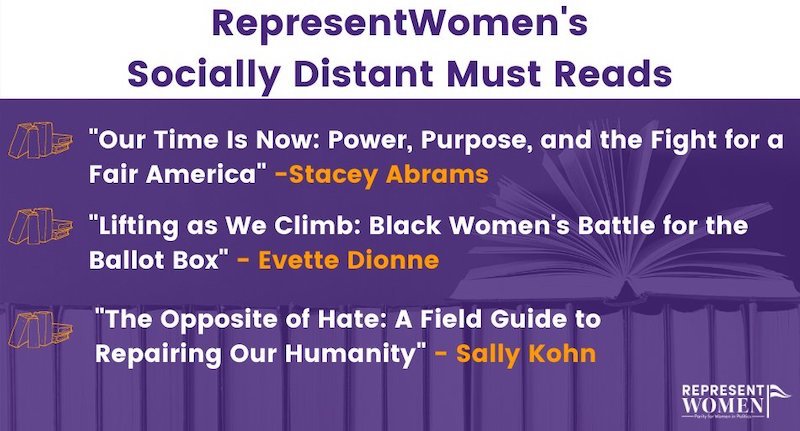
Our opponents are using the lame duck period—the time between now and when the new president is inaugurated, and a new Congress convenes—to do as much damage as they can. Help ensure Ms. remains strong and independent during this period of challenge and change. If you found this article helpful, please consider supporting our independent reporting and truth-telling for as little as $5 per month.




